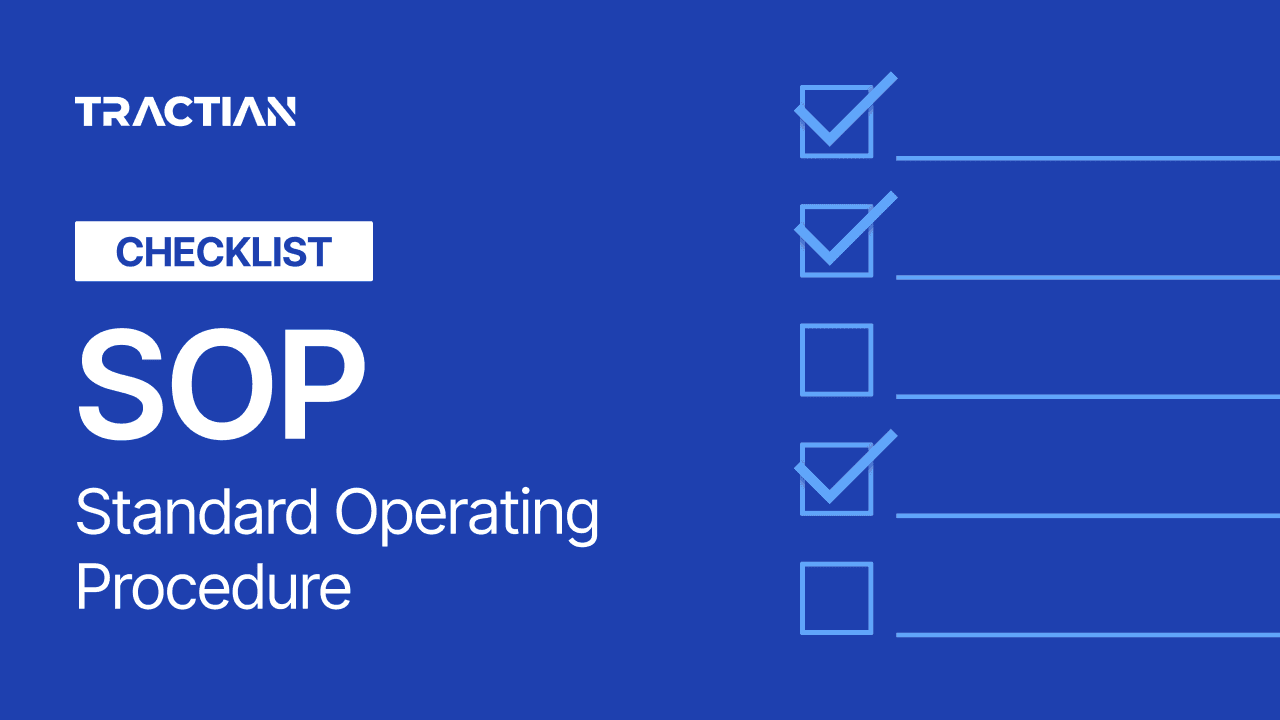Audits are pressure tests. And in industries like pharma and biotech, 21 CFR compliance separates audit-ready operations from those that are scrambling to catch up.
You can’t pass your 21 CFR audit with last-minute checklists and “just good enough” logs, though. If you want to pass with flying colors, you'll need to create a system that works before the auditor steps through your door.
When you treat compliance as an outcome instead of an afterthought, inspections stop being stressful and start becoming predictable.
This article breaks down 10 actionable strategies that put your plant in control. Whether you're preparing for your first FDA inspection or tightening your approach to validation, these tips will help your team stay one step ahead.
Understanding 21 CFR
Let’s start with what 21 CFR is and why it matters.
21 CFR refers to Title 21 of the Code of Federal Regulations. It’s the rulebook the FDA uses to govern everything from how drugs are manufactured to how food is processed. And when we say “everything,” we mean it.
This regulation covers documentation, maintenance, process controls, electronic records, and even how data is stored and retrieved.
But not every section applies to every company. Different parts of 21 CFR cover specific areas:
- Part 11: Electronic records and signatures
- Part 210/211: Good Manufacturing Practices for pharmaceuticals
- Part 820: Quality system requirements for medical devices
- Part 110/117: Food safety and hygiene practices
You don’t have to memorize every clause. The point is knowing which ones impact your operation, and building systems that consistently comply with them.
Compliance is a daily habit. If you’re not aligned with the right parts of 21 CFR, your maintenance logs (or even a basic sensor replacement) could open the door to citations-or worse, shutdowns.
Key 21 CFR Provisions
21 CFR is infamously dense. It’s packed with clauses, subclauses, and footnotes. But at the end of the day, only a few core provisions show up in almost every audit. These are the non-negotiables to focus on:
1. Documented Procedures (SOPs)
The FDA wants proof that your processes aren’t made up on the spot. Every critical activity, from cleaning to calibration, needs a written, approved standard operating procedure.
And no, tribal knowledge doesn’t count. SOPs must be version-controlled and followed as written.
2. Accurate Maintenance and Calibration Records
If you touch a machine, the record better exist. That means date, time, who did the work, what was done, and why. The same goes for calibration: if you’re using measurement devices, they need documented accuracy checks. Incomplete or missing logs are one of the fastest paths to a 483 observation.
3. Equipment Design and Installation Controls
Beyond how you use equipment in your day-to-day operations, auditors want to know how it was chosen, installed, and verified. They expect to see specs, installation qualifications (IQ), and operational checks (OQ) that prove assets were brought online the right way.
4. Change Control
If something changes, it needs to be documented. Auditors want to see how you decided to do it.
5. Traceability and Audit Trails
Can you prove who changed a maintenance record six months ago? Can you show every time a critical sensor was inspected? Traceability means having complete, tamper-proof records, not haphazard spreadsheets.
10 Tips for Passing FDA Audits
Your team needs more than good intentions to avoid citations. You need structure. These ten strategies go beyond theory and focus on the systems, habits, and documentation practices that actually get inspected during 21 CFR audits:
1. Document Your Standard Operating Procedures (SOPs)
Your SOP is the first thing auditors ask for, and it’s the first thing they’ll scrutinize. If a process isn’t written, it doesn’t exist. If it’s written but not followed, that’s worse.
Each SOP must clearly define how, when, and by whom a task is performed. And just as important: those SOPs have to match what’s happening on the floor.
If a technician performs a PM weekly, the document better reflect that. If the document says monthly, but records show otherwise, that’s a compliance red flag. Tie each SOP to employee training and retrain your team every time you update a procedure.
2. Control, Track, and Manage Your Data Electronically
Paper trails don’t cut it anymore. FDA auditors expect real-time visibility and complete traceability. Every piece of data should live in a system that captures who did what, when they did it, and why. Every interaction needs to be time-stamped and traceable, too.
The more structured and centralized your data is, the easier it becomes to demonstrate control during an inspection.
Now let’s talk access control. Not just anyone should be able to edit data(and any changes that are made need an audit trail).
3. Conduct Random Internal Audits
Being inspection-ready means operating like an audit could happen at any time, because it can. Random internal audits reveal weak links before the FDA does.
Unannounced checks force teams to follow procedures consistently, not just during “prep mode.” They expose records that aren’t up to date, work orders closed without completion, or equipment that hasn’t been verified as required.
It’s a good idea to rotate who performs these audits and audit across departments, not just maintenance.
Most importantly, use your findings to make processes better. Track trends in deviations, retrain where needed, and document every corrective action.
4. Keep Detailed Records of All Activities
If it’s not recorded, it didn’t happen.
Every single maintenance action needs a detailed, time-stamped record. Don’t leave anything out.
What’s more, records should be created in real-time, not hours later, and they should be stored where they’re easily retrievable. You also need supporting documentation like photos and certificates for certain tasks.
5. Implement a Robust Training Program
Untrained employees put your entire compliance strategy at risk. Remember that FDA auditors will question technicians directly, so your training program needs to go beyond the basics.
Every technician must be trained and certified for the SOPs and assets they’re responsible for.. If an SOP changes, it’s time to retrain.
And if a new hire joins, they shouldn’t touch critical equipment until they’re qualified.
Don’t rely on sign-offs alone. Use assessments and confirm employees know what they’re doing with walk-throughs. Don’t forget to keep a clear record of who trained whom and when.

6. Establish a Preventive Maintenance (PM) Program
Preventive maintenance is best practice under 21 CFR.
Your PM program should be three things: structured, risk-based, and repeatable. That means setting clear schedules based on asset criticality and traceable records that prove completion.
If a compressor requires lubrication every 500 hours, your system should alert the team before it’s overdue, and log the result when it’s done.
PM tasks must be documented with the same diligence as corrective work. Every detail has to be captured in your system.
7. Implement a Corrective and Preventive Action (CAPA) System
CAPA is your structured response to anything that goes wrong or might go wrong.
Even if a deviation is caught before failure, your CAPA process should kick in immediately. This includes:
- Root cause analysis
- Corrective action planning
- Timeline for resolution
- Verification steps
- Effectiveness checks
Auditors will look at how you track and resolve issues, and they’ll want to see that CAPAs prevent repeated failures.
8. Digitize Your Processes and Data
You can't manage what you can't see. If your processes live in separate systems, you risk missing records and preventable violations.
Digitization centralizes your data, so you gain full control over it.
For example, a digital system can flag if a technician tries to start a work order they’re not trained for. It can also block PMs from closing unless all checklist items are completed.
9. Review Internal Inspection Findings With Your Teams
What happens after an internal audit matters more than the audit itself. It’s not enough to fix what went wrong, your team needs to understand why it happened and how to prevent it going forward.
This is where cross-departmental collaboration is essential. If QA flags a training gap, for example, maintenance should be looped in. Every gap is an opportunity to reinforce expectations and strengthen processes.
Keep these reviews structured and don’t forget to follow up. In an FDA audit, your internal reviews are a direct reflection of how seriously your plant takes compliance.
10. Implement a CMMS
A modern CMMS is no longer a “nice to have.”
With the right CMMS, every task is planned, documented, and traceable. It connects your SOPs, training records, and more in one place, so you have a full audit trail for every action taken.
A great CMMS gives you a level of depth and control you’ve never had before, and backs it all up with the insights your team needs to stay audit-ready.
Audit Preparation Checklist
Here’s a straightforward checklist to help your team face your next FDA inspection with confidence.
✅Validate Your SOP Library
Ensure all procedures are up to date and reflect current practices. Archive outdated versions and confirm that every SOP links to specific assets and tasks.
✅Review Maintenance Records
Check for missing or incomplete entries. Next, cross-check against your preventive maintenance schedule to confirm all critical PMs were completed on time.
✅Audit Your Training Matrix
Verify that each technician is trained and certified for the SOPs they execute. Review recent training logs and confirm refresher training for updated procedures.
✅Confirm Calibration Status
Ensure all measurement and inspection tools have current calibration certificates, and make sure every record is tied to the equipment it supports.
✅Test Your Traceability
Simulate a traceability request: Can you find all maintenance actions for a specific asset in the last six months, including dates, technician names, and associated SOPs?
✅Review Open and Closed CAPAs
Make sure all CAPAs are fully documented. Pay attention to effectiveness checks and double-check that follow-up tasks were completed and logged.
✅Verify Change Controls
Any equipment changes or updated SOPs should have corresponding evaluations, approvals, and documentation.
✅Inspect Real-Time Dashboards
If you’re using a CMMS, review your dashboards: What tasks are overdue? Which assets are trending toward failure? Are there data gaps you can fix?
How Tractian’s CMMS Can Help You Pass 21 CFR Audits
To stay compliant, you need a system that makes all these processes stick. Fortunately, Tractian’s CMMS is built exactly for that.
Whether you're dealing with FDA inspections or internal reviews, our platform makes compliance part of your daily routine.
Tractian transforms how teams operate by digitizing critical SOPs, automating PM schedules, and giving technicians mobile tools to log work in real time, even without a signal.
And we go even further by surfacing execution gaps and delays before they become audit findings. Your dashboards make it clear where performance is slipping, while AI-generated routines help standardize work and eliminate inconsistencies across shifts and teams.
All of that with a free onboarding process and quick implementation.

![10 Tips For Passing 21 CFR Audits [Full Guide]](https://ghost-imgix.tractian.com/2025/05/10-tips-for-passing-cfr-audits-full-guide.png?auto=format%2Ccompress&cs=origin&fit=max&q=75&w=1200)
